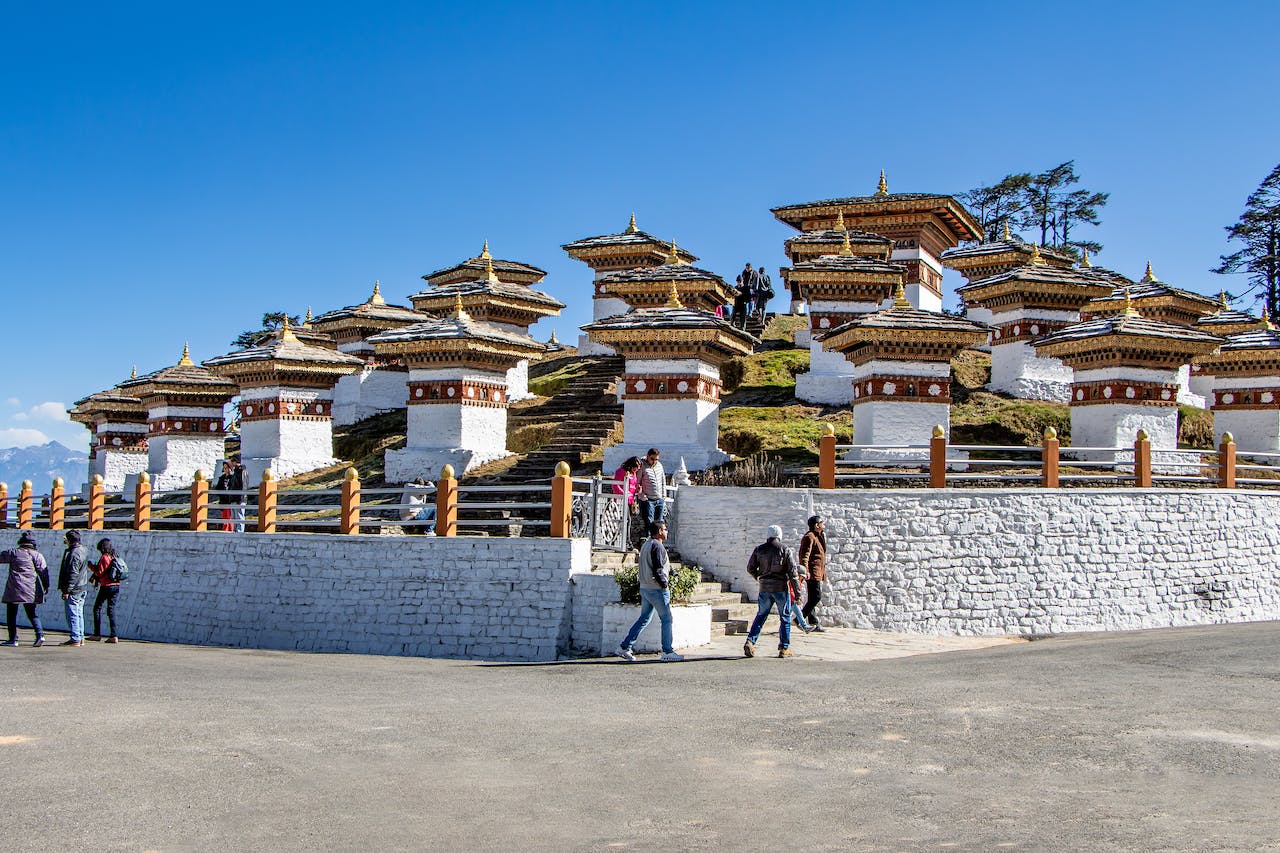A tiny kingdom of just a quarter of a million inhabitants, situated high up in a mountain of the Himalayas with Nepal and China as neighbours, it is recognised as the happiest place in the world.
Bhutan also developed an index of Gross National Happiness to determine the country’s growth.
Bhutan Tour Package Singapore will take you to the magical Western hills of Bhutan, including an excellent overview of the Dragon Kingdom.
Here are ten more fascinating facts about the small country that will make anyone visit right away. Bhutan travel cost is not to the extreme, one can visit it is minimal budget.
Travel to the Tiger’s Nest for a spiritual quest.
Trekking to Taktsang Monastery, which clings to the edge of a cliff 900 metres above Paro Valley’s green rice fields, is a must-do on every trip to Bhutan.
This ancient monastery, which dates from the 17th century, is one of the kingdom’s most remarkable landmarks.
Stop along the way to admire the mesmerising sights and visit the tranquil temples.
Don’t depart without getting a blessing from a local monk; you’ll feel enlightened afterwards.
- Take a hike on the mysterious Snowman trail
Just a few trekkers per season attempt Snowman Trek is one of Bhutan’s most difficult high-elevation treks.
This 216-mile trek starting Gunitsawa Village in Paro Hill to Sephu in Trongsa takes 25 days, marks many high passes, and passes through the mountain territory of Lunana, one of the world’s most isolated populated valleys.
This difficult trek, known by veteran Himalayan trekkers as the grail, provides a lifetime chance to see the kingdom’s untouched natural wonders, jaw-dropping sites, and rich tradition, as well as meet the friendly locals.
- Try a Bhutanese swimming routine to find your perfect spot
This pampering bathing ceremony, which can be found all over Bhutan and draws on together Indian Ayurvedic traditions and outdated medicine from 7th century Tibet, is not to be wasted.
A soothing bath in the tub made from wood filled with a special blend of river water, Fire-roasted river pebbles, and Artemisia leaves is the best way to calm aching joints after a long day hiking through the mountains.
- In a Bhutanese house, try the popular, burning chilli & cheese dish
Rural life of Bhutan has remained untouched for generations, and a homestay on a farm spread throughout the countryside is the only method to get a snapshot into a traditional Bhutanese family’s simple everyday life.
You’ll have the opportunity to work with agriculturalists, observe them making butter or milking cows, and sample authentic cuisines such as the nationwide dish ema datshi, a fiery mix of cheese and chillies.
- Visit the world’s only capital free of traffic lights
When you stroll around Thimphu, the world’s only city without road traffic lights, you’ll find the kingdom’s deep cultural values and gradual modernisation with no McDonald’s or Starbucks in view!).
On the streets, you’ll see people dressed in traditional national attire, and every new construction is constructed in the same traditional style, with carved wood and white-washed walls.
- Meet red pandas and blue sheep
Bhutan’s wildlife sanctuaries and many national parks are hosts to a variety of protected species, including the country’s national animal, the takin, and a strange woollen beast that can be seen in Thimphu’s Motithang Takin Preserve.
Blue sheep can also be found. However, they are neither blue nor sheep! They’re called bharals because they resemble goats and have bent horns. In the winter, the Grus nigricollis is found in the Phobjikha Valley, where bharals and red pandas live high in the mountains.
Bhutan is a beautiful palette of colours for these colourful creatures and birds!
- Take in some of Bhutan’s most beautiful architecture.
It’s a must to see some of Bhutan’s most overwhelming dzongs. These ancient fortresses are a testament to the country’s rich cultural and scientific heritage.
Trongsa Dzong, the royal family’s ancestral house, flies over a ravine over the Mangde Chhu river and appears to glide in the early morning haze – an opportunity not to be wasted amid the arduous journey.
At the convergence of the Pho Chhu and Mo Chhu rivers in Punakha Dzong, also known as The Palace of Happiness. The Dochu La Pass is crossed on the way to Punakha, and the dzong is passed by an enchanting orange, red, and white wooden cantilever bridge.
It is the most beautiful fortification in the world, particularly in the spring when its high white-washed walls are surrounded by lilac-coloured jacaranda trees. Monks use this dzong as their authorised dwelling during the winter months, and you can hear them singing.
- Watch as demons and gods do a mesmerising masked dance
Tshechu is a holy festival that is an important portion of Bhutanese culture and allows tourists to immerse themselves in the country’s rich culture.
Multi-coloured masked dancers perform spiritual dances such as the Tsholing Cham and Ging, a holy war dance between frightening ghosts and gods, in each one. The Paro Tshechu is held every spring in the town of Paro if you want to attend a more famous one.
Other activities include a five-day dance such as Ura Tsechu, a carnival held in Bumthang each November during which monks and laypeople alike wear masks when performing.
It draws fewer tourists and gives visitors a better understanding of Bhutanese society.
- Spend an evening at an archery contest
Bhutan’s national game is considered a festivity of the country’s history. Tournaments are organised all over the world to offer insight into the society of the host country.
Expect lots of feasting, partying, and light-hearted competition at these tournaments, which are big social activities. Each team also has “jeerleaders” who try to divert the archers from their target.
- Raft down fifteen hair-raising waterfall
Water rafting, which has just recently become common in Bhutan, is an excellent way for adventure seekers to realise the country’s pristine natural scenery.
The Punakha Valley’s Mo Chhu and Pho Chhu rivers are excellent choices.
The 16-kilometre path takes you through stunning foothill scenery and the magnificent Punakha Dzong, with about fifteen Class II to IV waterfalls along the way.


